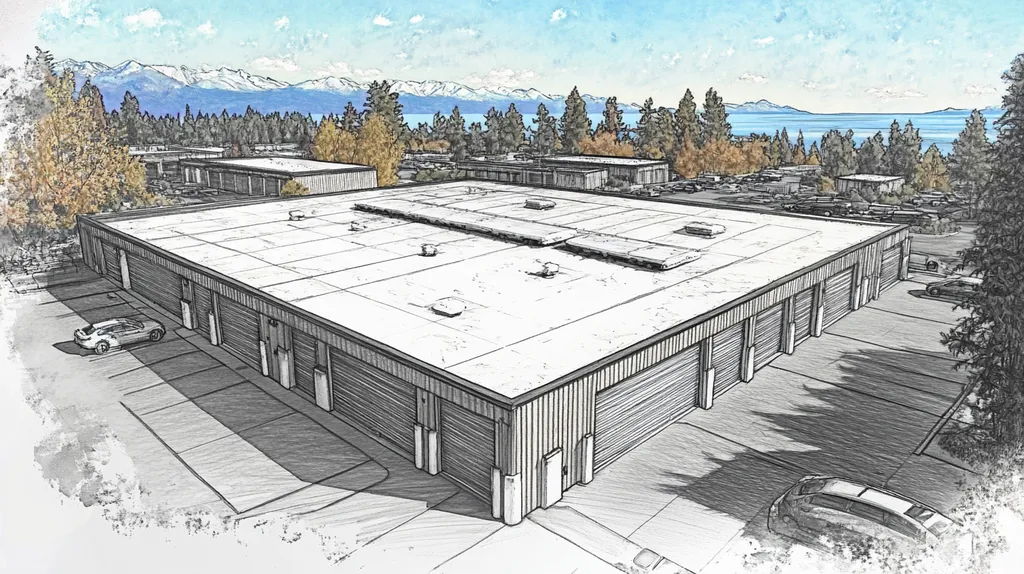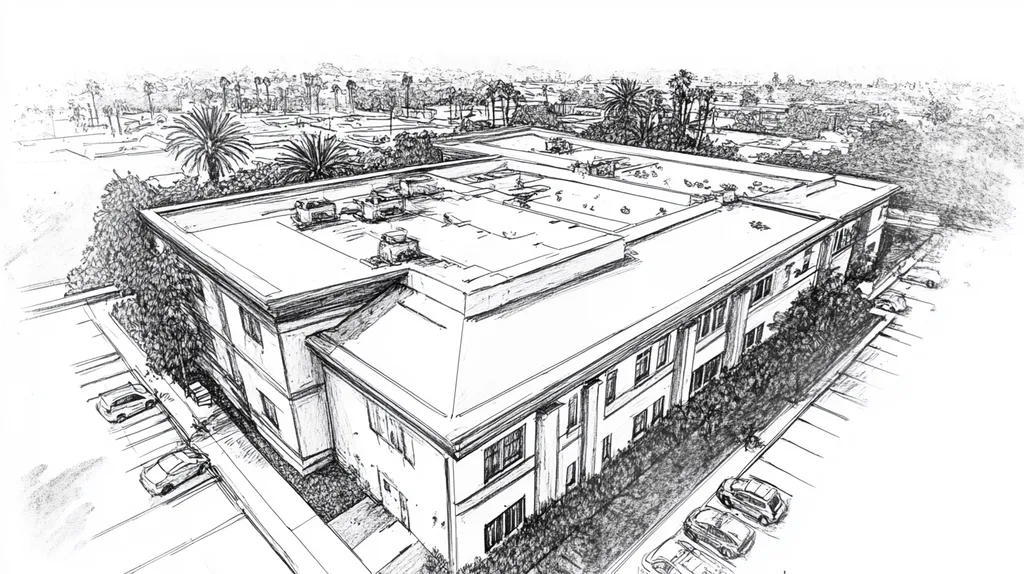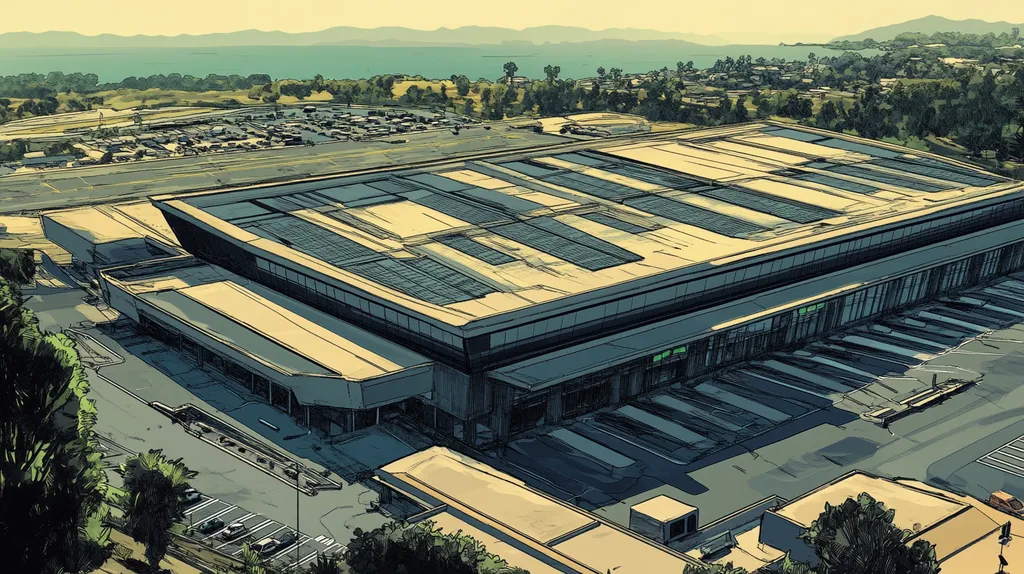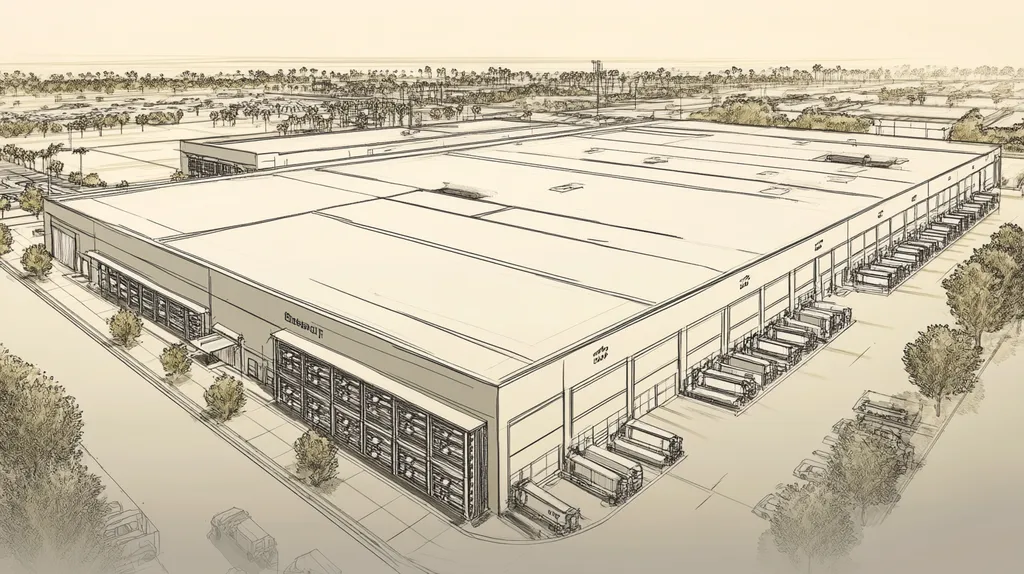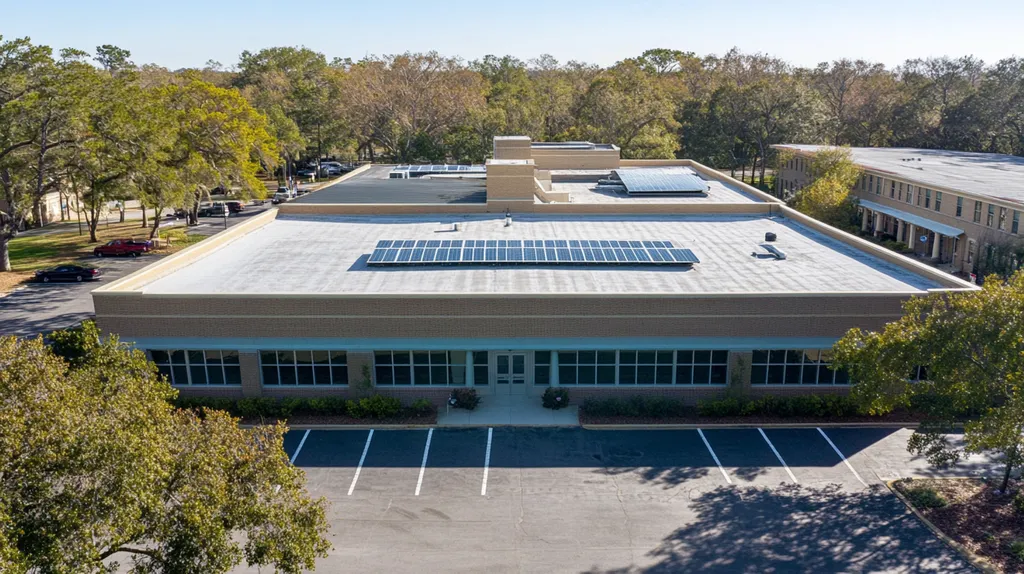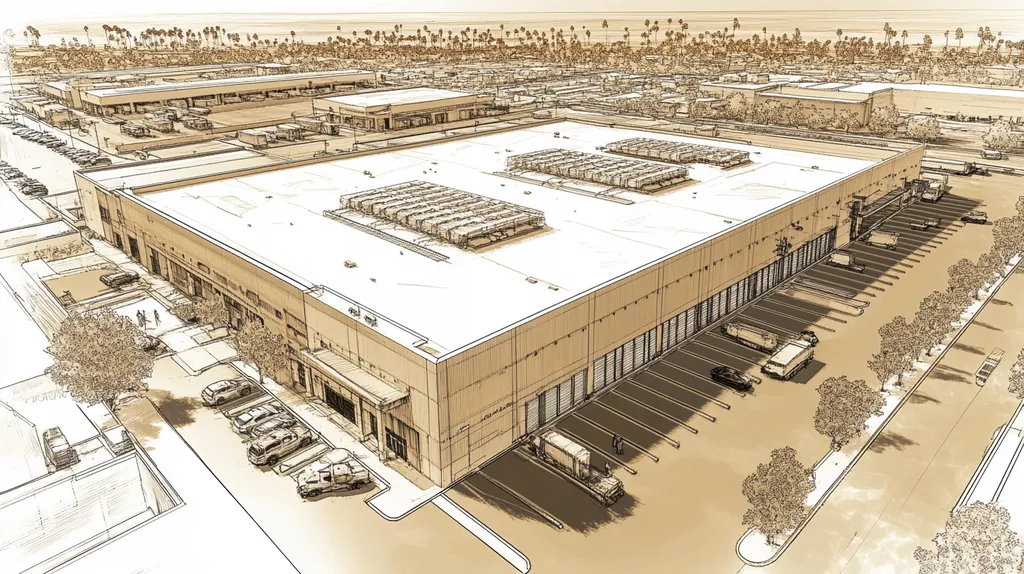Welcome to today’s Battle Royale featuring two roofing heavyweights: “TPO” in the east corner versus “EPDM” in the west!
Tonight’s showdown pits these contenders against each other across six punishing rounds designed to test every aspect of their performance for Commercial Roof Maintenance.
At stake? Millions in potential costs, decades of building protection, and the critical performance demands of modern commercial and industrial facilities.
Our professional judging panel will evaluate each round on technical merit, real-world performance, and value delivery. After all six rounds, we’ll declare our ultimate champion.
Ladies and gentlemen, facility managers and building owners… it’s time to rumble!
ROUND 1: INITIAL COSTS & INSTALLATION
In today’s volatile economic climate, making informed decisions about commercial roofing systems has never been more critical. With material costs fluctuating and labor expenses rising, property owners face increasing pressure to maximize their roofing investments while ensuring long-term building protection. The choice between TPO and EPDM roofing systems represents a significant financial and operational decision that impacts not just immediate budgets, but long-term facility management strategies.
Material Expenses
Material costs form the foundation of any roofing project, directly impacting both immediate budgets and long-term facility planning. Understanding these expenses helps organizations make sustainable financial decisions that benefit both their operations and the broader business community.
TPO materials typically cost between $3.50 to $5.50 per square foot, making it an economical choice for budget-conscious projects. This cost-effectiveness enables organizations to allocate resources to other critical facility improvements while still maintaining high roofing standards.
EPDM materials generally range from $4.00 to $7.50 per square foot, representing a higher initial investment. However, this premium often translates to enhanced durability and longer service life, potentially offering better value over the system’s lifespan.
In the material expense category, TPO demonstrates a clear ADVANTAGE, particularly for organizations seeking to balance quality with fiscal responsibility.
Installation Complexity
Installation complexity directly affects project success rates and long-term roof performance. Professional installation requires specific expertise and equipment, impacting both timeline and budget considerations.
TPO installation demands specialized heat-welding equipment and highly trained technicians. The precision required for proper seam welding can extend installation times and increase labor costs, though it results in robust, watertight joints.
EPDM offers simpler installation methods, primarily using adhesives and mechanical fasteners. This straightforward approach reduces the likelihood of installation errors and typically requires less specialized equipment.
EPDM gains the ADVANTAGE in installation complexity, offering more straightforward procedures that benefit both contractors and property owners.
Project Timeline
Project timelines significantly impact business operations and community activities. Efficient installation schedules minimize disruption while ensuring proper system integration.
TPO installations typically require additional time for seam preparation and welding processes. While these steps ensure system integrity, they can extend project duration and potentially affect facility operations.
EPDM installations generally progress more rapidly due to simpler application techniques. This efficiency helps maintain business continuity and reduces the impact on building occupants and surrounding activities.
For project timeline considerations, EPDM shows an ADVANTAGE through its more efficient installation process.
ROUND 1 WINNER: EPDM
ROUND 2: DURABILITY & LIFESPAN
In today’s challenging climate, the durability and lifespan of commercial roofing systems directly impact both immediate operations and long-term financial planning. A premature roof failure can cascade into extensive repair costs, business disruptions, and inventory damage. With replacement costs potentially reaching millions of dollars for large facilities, choosing between TPO and EPDM requires careful consideration of their performance characteristics over time.
Durability Against Weather Elements
Weather resistance represents a critical factor in roofing system selection, as extreme conditions can accelerate deterioration and lead to premature failure. Understanding how different materials perform under various weather conditions helps organizations protect their facilities and maintain operational continuity.
TPO membranes excel in UV resistance and maintain their reflective properties over time, helping reduce thermal stress on the roofing system. Their heat-welded seams create a monolithic surface that effectively resists water infiltration and wind uplift.
EPDM demonstrates exceptional resistance to ozone, UV radiation, and extreme temperature fluctuations. Its elastomeric properties allow it to expand and contract without compromising structural integrity, particularly beneficial in regions with dramatic temperature swings.
For weather resistance, both systems demonstrate strong performance, resulting in a TIE.
Lifespan and Maintenance Requirements
A roofing system’s total lifespan significantly impacts the facility’s long-term operational costs and maintenance planning. Regular inspections and maintenance of roof surfaces, drains, and downspouts play a crucial role in maximizing system longevity. (source: Travelers Insurance)
TPO systems typically last 20-25 years when properly maintained. Their heat-welded seams remain stable throughout the roof’s lifetime, though periodic inspection of seam integrity becomes increasingly important as the system ages.
EPDM systems frequently exceed 30 years of service life. Their simple composition and fewer seams contribute to reduced maintenance requirements and enhanced longevity, particularly when combined with regular preventive care.
EPDM gains the ADVANTAGE in this category due to its superior longevity and straightforward maintenance requirements.
Impact of Environmental Factors
Environmental conditions play a crucial role in determining roofing system performance and longevity. Different climates and exposure levels can significantly affect material degradation rates and overall system effectiveness.
TPO’s highly reflective surface helps reduce cooling costs and minimizes thermal cycling stress. This characteristic proves particularly valuable in urban environments where heat island effects can accelerate roofing system deterioration.
EPDM’s dark surface absorbs heat, which can benefit facilities in colder climates by reducing heating costs. However, this same characteristic may accelerate aging in hot climates through increased thermal stress.
TPO claims the ADVANTAGE in environmental impact due to its superior heat reflection and reduced thermal stress characteristics.
ROUND 2 WINNER: EPDM
ROUND 3: PERFORMANCE FACTORS
In today’s competitive commercial real estate market, roofing system performance can make or break a property’s operational success. With maintenance costs consuming up to 30% of facility budgets, choosing between TPO and EPDM requires careful evaluation of their performance characteristics to protect both immediate operations and long-term investments.
Weather Resistance
Weather resistance directly impacts a roof’s ability to protect valuable assets and maintain building integrity. A proactive approach to weather protection helps prevent costly emergency repairs and extends system longevity.
TPO membranes demonstrate exceptional resistance to UV radiation and extreme temperature variations. Their heat-welded seams create a monolithic surface that effectively resists water penetration, making them particularly suitable for regions with varied weather patterns.
EPDM shows remarkable durability in colder climates and handles freeze-thaw cycles effectively. However, its performance can decline more rapidly in areas with intense UV exposure, potentially requiring additional protective measures.
In this category, TPO claims the ADVANTAGE due to its superior all-weather performance characteristics.
Energy Efficiency
Energy efficiency has become a critical factor in commercial roofing, directly affecting both operational costs and environmental impact. A proactive approach to roof maintenance helps preserve these energy-saving benefits throughout the system’s lifespan. (source: Xenia Team)
TPO’s highly reflective surface significantly reduces cooling costs in warm climates. This reflectivity remains stable over time, helping maintain consistent energy performance throughout the roof’s service life.
EPDM’s dark surface absorbs more solar radiation, potentially increasing cooling costs in warmer regions. While this heat absorption can benefit colder climates, it typically results in higher overall energy consumption.
TPO demonstrates a clear ADVANTAGE in energy efficiency through its superior reflective properties.
System Integration
System integration capabilities significantly impact both initial installation success and long-term performance. Proper integration with existing building systems ensures optimal protection and reduces the risk of failure points.
TPO membranes offer excellent compatibility with modern building automation systems and roof-mounted equipment. Their flexible installation options allow for better adaptation to complex roof geometries and penetrations.
EPDM systems, while reliable, may require additional consideration when integrating with newer building technologies. Their traditional installation methods can sometimes limit options for advanced system integration.
TPO gains the ADVANTAGE in system integration due to its superior flexibility and compatibility features.
ROUND 3 WINNER: TPO
ROUND 4: MAINTENANCE REQUIREMENTS
In today’s challenging facility management landscape, proper roof maintenance directly impacts both operational continuity and financial stability. Studies indicate that neglected commercial roofs can fail in as little as 10-12 years, while well-maintained systems often last 20-30 years or longer. For property owners and facility managers, understanding the maintenance requirements of TPO versus EPDM systems has become increasingly crucial as labor costs rise and building codes become more stringent.
Routine Inspection Requirements
Regular inspections form the cornerstone of effective roof maintenance, directly impacting system longevity and performance. A regular roof inspection program can help extend roof life expectancy and reduce emergency repairs. (source: Travelers Insurance)
TPO systems require semi-annual professional inspections focusing on seam integrity and surface condition. Their white surface makes visual inspections more straightforward, allowing maintenance teams to quickly identify potential issues before they escalate.
EPDM systems demand quarterly inspections due to their greater susceptibility to mechanical damage and UV exposure. Their dark surface can make visual inspections more challenging, often requiring more thorough examination to detect developing problems.
TPO gains the ADVANTAGE in inspection requirements through its easier visual assessment and reduced inspection frequency.
Preventive Maintenance Needs
Preventive maintenance programs protect roofing investments by addressing minor issues before they develop into major problems. These programs must balance effectiveness with operational efficiency to maintain building protection while controlling costs.
TPO membranes typically require minimal preventive maintenance beyond regular cleaning and debris removal. Their heat-welded seams remain stable over time, reducing the need for ongoing seam maintenance.
EPDM systems often need more frequent preventive care, particularly around seams and penetrations. Their adhesive-based connections may require periodic reinforcement to maintain water-tight integrity.
TPO demonstrates an ADVANTAGE in preventive maintenance through its reduced maintenance requirements and stable seam performance.
Repair Complexity
Repair complexity significantly impacts maintenance costs and system reliability. Understanding these requirements helps organizations plan resources and maintain proper coverage for their facilities.
TPO repairs require specialized welding equipment and skilled technicians, making even minor repairs more complex. However, these repairs typically result in permanent solutions that restore original membrane integrity.
EPDM offers simpler repair methods using adhesive-based systems, allowing for more straightforward fixes. This approach enables faster repairs but may require more frequent maintenance to maintain effectiveness.
EPDM claims the ADVANTAGE in repair complexity through its more accessible repair methods.
ROUND 4 WINNER: TPO
ROUND 5: SUSTAINABILITY CREDENTIALS
Today’s commercial building sector faces unprecedented pressure to reduce environmental impact while maintaining operational efficiency. With buildings accounting for nearly 40% of U.S. energy consumption and roofing systems significantly influencing this usage, selecting sustainable roofing materials has become a critical business decision that affects both immediate operations and long-term environmental compliance.
Environmental Manufacturing Impact
The manufacturing processes behind roofing materials directly influence their overall environmental footprint. Understanding these impacts helps organizations make informed decisions that align with both environmental goals and operational requirements.
TPO production requires significant energy input and creates chemical byproducts, though manufacturers have implemented advanced recycling programs and energy-efficient production methods. Modern facilities often incorporate closed-loop systems that minimize waste and reduce environmental impact.
EPDM manufacturing generally consumes less energy and produces fewer emissions during production. Its simpler chemical composition and established manufacturing processes result in a smaller carbon footprint during production.
EPDM claims the ADVANTAGE in manufacturing impact through its more efficient production process.
Recyclability and Waste Reduction
End-of-life considerations significantly impact a roofing system’s overall environmental footprint. Proper disposal and recycling capabilities help organizations minimize landfill impact while supporting circular economy initiatives.
TPO membranes can be fully recycled into new roofing materials, reducing landfill waste and supporting sustainable material cycles. Many manufacturers offer take-back programs that facilitate proper recycling and reduce disposal costs.
EPDM materials present greater recycling challenges due to their chemical composition and adhesive content. While some recycling options exist, they are generally more limited and less widely available.
TPO demonstrates an ADVANTAGE in recyclability through its superior end-of-life options.
Energy Performance
Energy efficiency remains a critical factor in sustainable building operations. Roofing choices significantly impact heating and cooling costs, affecting both environmental impact and operational expenses.
TPO’s highly reflective surface dramatically reduces cooling loads in warm climates. This reflectivity helps minimize urban heat island effects and reduces building energy consumption throughout the system’s lifespan.
EPDM’s dark surface absorbs more solar radiation, potentially increasing cooling requirements in warmer regions. While this heat absorption can benefit colder climates, it typically results in higher overall energy usage.
TPO claims the ADVANTAGE in energy performance through its superior thermal management capabilities.
ROUND 5 WINNER: TPO
ROUND 6: SPECIALIZED APPLICATIONS
In today’s complex commercial building environment, specialized roofing applications present unique challenges that directly impact both operational efficiency and facility protection. With over 40% of commercial roof failures occurring due to improper material selection for specific use cases, choosing between TPO and EPDM systems requires careful evaluation of their performance in demanding applications.
Extreme Weather Resistance
Severe weather events increasingly threaten commercial facilities, making weather resistance a critical factor in specialized roofing applications. Regular inspections and proper maintenance become essential for protecting these installations against extreme conditions. (source: Travelers Insurance)
TPO membranes demonstrate superior puncture resistance and maintain structural integrity during high-wind events. Their heat-welded seams create a monolithic surface that effectively resists water infiltration during severe storms.
EPDM systems excel in extreme temperature variations but may show vulnerability to puncture damage from wind-driven debris. Their flexible nature allows for excellent hail impact resistance but can require additional reinforcement in hurricane-prone regions.
TPO claims the ADVANTAGE in extreme weather applications through its superior impact resistance and seam strength.
Solar Integration Capabilities
The growing adoption of rooftop solar installations demands roofing systems that can accommodate complex mounting systems while maintaining waterproof integrity. Proper integration directly impacts both energy generation efficiency and roof longevity.
TPO systems offer excellent compatibility with solar mounting systems and maintain their reflective properties around panel installations. Their heat-welded seams provide secure attachment points without compromising system integrity.
EPDM requires more complex flashing details around solar mounts and may experience accelerated aging in areas exposed to concentrated sunlight. While durable, its installation flexibility becomes limited when incorporating solar arrays.
TPO demonstrates an ADVANTAGE in solar integration through its superior mounting compatibility and maintained performance.
Chemical Resistance Requirements
Industrial facilities often expose roofing systems to harsh chemicals and pollutants that can accelerate material degradation. Understanding chemical resistance capabilities helps protect both roofing investments and facility operations.
TPO membranes show excellent resistance to industrial chemicals and maintain their protective properties even under sustained exposure. Their thermoplastic composition helps prevent chemical absorption and material breakdown.
EPDM systems demonstrate good general chemical resistance but may show vulnerability to certain petroleum-based products and industrial solvents. Their organic composition can make them susceptible to specific chemical interactions.
TPO gains the ADVANTAGE in chemical resistance through its superior protection against industrial exposures.
ROUND 6 WINNER: TPO
AND THE WINNER IS…
After six grueling rounds of technical evaluation, we have our verdict…
In a decisive 4-2 victory, TPO claims the championship belt! This modern marvel dominated with superior performance in sustainability, specialized applications, and maintenance efficiency, while demonstrating remarkable versatility across diverse commercial applications.
TPO’s winning combination of energy efficiency, simplified inspection requirements, and exceptional integration capabilities with modern building systems proved too powerful for its veteran opponent to overcome.
Yet don’t count EPDM out of the game entirely! This seasoned contender still delivers knockout performance in specific situations, particularly in cold-climate applications where its superior durability and simplified installation make it a formidable choice.
IMPORTANT NOTICE: Every building presents unique challenges that can impact roofing system performance. Local climate conditions, building usage patterns, and specific structural characteristics all play crucial roles in determining the optimal solution. This analysis provides general guidance but cannot account for all variables. Property owners should always consult with qualified roofing professionals who can evaluate their specific situation before making final decisions.
Ladies and gentlemen, in the high-stakes world of commercial roofing, victory goes not to the strongest contender alone, but to those who carefully match their facility’s unique requirements with the right champion’s capabilities. Choose wisely!
FREQUENTLY ASKED QUESTIONS
Q. What are initial costs for a commercial roof installation?
A. The initial installation costs vary based on the roofing material. TPO materials typically range from $3.50 to $5.50 per square foot, while EPDM costs between $4.00 and $7.50. Understanding these costs helps property owners make informed financial decisions for sustainable facility management.
Q. How do durability and lifespan differ for commercial roofs?
A. The durability and lifespan of roofing materials significantly impact long-term costs. TPO systems can last 20-25 years, while EPDM often exceeds 30 years. Choosing the right material ensures financial stability and reduces maintenance expenses over time.
Q. What factors affect commercial roof performance?
A. Key performance factors include weather resistance, energy efficiency, and system integration capabilities. TPO provides superior all-weather performance and energy efficiency, which can lead to lower operational costs, enhancing overall building value.
Q. How do maintenance requirements compare for TPO and EPDM commercial roofs?
A. TPO roofs require semi-annual inspections, while EPDM needs quarterly checks due to its susceptibility to damage. Regular maintenance is crucial for extending roof life and optimizing performance, ensuring that both systems meet operational demands effectively.
Q. What are the sustainability credentials of commercial roofing options?
A. TPO roofs are fully recyclable, helping to reduce landfill waste, while EPDM has limited recycling options. Energy efficiency is another critical factor, as TPO significantly lowers cooling loads, contributing to overall environmental sustainability and compliance.
Q. How do specialized applications affect roofing choices for commercial roofs?
A. Specialized applications require roofing systems that can withstand unique challenges. TPO excels in extreme weather conditions and solar integration, while EPDM may require additional considerations. Choosing the appropriate material is vital to ensure long-term protection and efficiency.
Q. What influences the choice between TPO and EPDM for commercial roofs?
A. Decisions between TPO and EPDM hinge on factors such as budget, climate conditions, and maintenance capabilities. By considering these aspects, facility managers can select a roofing solution that aligns with their operational needs and sustainability goals.

